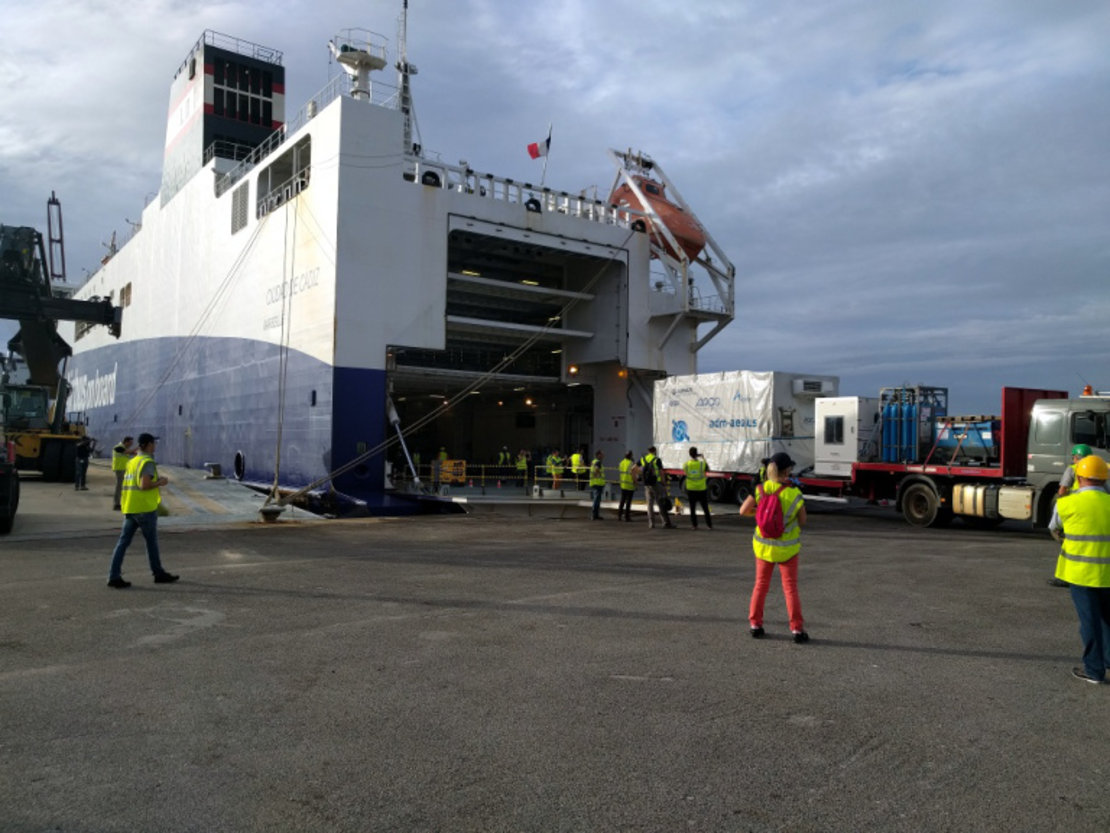New Aeolus Mission Will Use a Laser to Monitor Earth's Winds (Video)
After more than 16 years of development and a 12-day journey across an ocean, the European Space Agency's newest wind-monitoring satellite will finally launch next month. A new video shows how the satellite will track air movement with a powerful laser.
Aeolus is the latest weather-watching mission from the European Space Agency's (ESA) Earth Explorers program. According to agency officials, Aeolus' ability to measure wind profiles from space will fill in an existing gap of meteorological observations, and will also help increase the accuracy of weather forecasts. The satellite recently journeyed 12 days across the Atlantic Ocean to French Guiana in South America to prepare for launch.
ESA's Earth Explorers missions study the interactions among several of our planet's components, such as its atmosphere, biosphere, cryosphere (cold regions like glaciers and those with permafrost), hydrosphere (all water regions like oceans, groundwater sources and clouds) and interior. And the Earth Explorer research is especially focused on learning more about the impact of human activity on Earth's processes. [GOES-S: NOAA's Next-Gen Weather Satellite in Photos]

Aeolus is equipped with a large instrument called Aladin. It's a Doppler wind lidar instrument, meaning it's a detection system that's set up like radar but uses a light beam rather than radio waves. Aladin's laser is designed to measure the winds traveling in the lowest 30 kilometers (19 miles) of Earth's atmosphere, according to a statement issued by ESA on July 7. (The new video digs into how the first-of-its-kind technology works.)
Aeolus' instruments are so delicate that the satellite had to travel by ship, from St. Nazaire, France, to the Port of Cayenne in French Guiana; flight transportation ran a risk of damaging the instruments because of air repressurization that happens during descent, ESA officials said in the statement.
Aeolus is scheduled to launch into its three-year orbit this August from Guiana Space Center, in French Guiana. The site's latitude is 5 degrees 3 minutes north, according to ESA, which makes it a good location to launch heavier payloads like Aeolus. Earth's rotation acts as an extra source of propulsion for the rocket as it brings the satellite into space.
Follow Doris Elin Salazar on Twitter @salazar_elin. Follow us@Spacedotcom, Facebook and Google+. Original article on Space.com.
Get the Space.com Newsletter
Breaking space news, the latest updates on rocket launches, skywatching events and more!
Join our Space Forums to keep talking space on the latest missions, night sky and more! And if you have a news tip, correction or comment, let us know at: community@space.com.

Doris is a science journalist and Space.com contributor. She received a B.A. in Sociology and Communications at Fordham University in New York City. Her first work was published in collaboration with London Mining Network, where her love of science writing was born. Her passion for astronomy started as a kid when she helped her sister build a model solar system in the Bronx. She got her first shot at astronomy writing as a Space.com editorial intern and continues to write about all things cosmic for the website. Doris has also written about microscopic plant life for Scientific American’s website and about whale calls for their print magazine. She has also written about ancient humans for Inverse, with stories ranging from how to recreate Pompeii’s cuisine to how to map the Polynesian expansion through genomics. She currently shares her home with two rabbits. Follow her on twitter at @salazar_elin.









